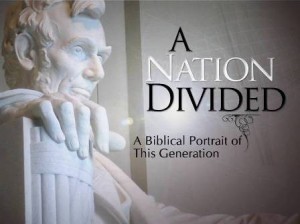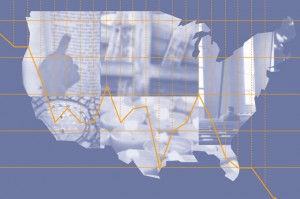A Church Assessment Can Change Your Church
March 10, 2018 by Cup&Cross
Filed under Featured, News, Publication, Research
 Failure to thoroughly or consistently review aspects of the church will have a negative impact on the organisation in multiple ways. In contrast, when a church embraces an intentional review process there are a number of benefits:
Failure to thoroughly or consistently review aspects of the church will have a negative impact on the organisation in multiple ways. In contrast, when a church embraces an intentional review process there are a number of benefits:
1. An intentional church assessment process provides key information that can be catalytic for the growth of the church.
2. An intentional church assessment process ensures the church does not drift from its mission.
3. An intentional church assessment process uses the vision as motivation for change.
4. An intentional church assessment process protects the culture by ensuring it is not neglected in the busyness of activity.
5. An intentional church assessment process will identify when the systems or structure are no longer serving the vision.
6. An intentional church assessment process creates accountability for the achievement of strategic goals.
When you change a GENERATION you change a NATION
Comments Off on When you change a GENERATION you change a NATION
 In the CHANGE of one GENERATION is a change for the whole NATION
In the CHANGE of one GENERATION is a change for the whole NATION
The success of Israel was in the GLORY of GOD and its power to overturn evil kings and political systems
- In the case of Moses this was the Pharoah
- In the case of David this was Saul
- In the case of Ezekiel this was Babylon
And EVERY TIME the people who followed the glory were blessed and received the covenant promises
See why this is important for US today
40 Days of Prayer to Change the Heart of a Nation Begins
Church of God General Overseer Mark Williams has urged Church of God congregations to consider joining the interdenominational prayer effort, “40 Days of Prayer to Change the Heart of a Nation!” The forty-day prayer emphasis takes place from September 28 to November 6, 2012. Tens of thousands of other congregations will participate in the joint prayer venture.
Williams noted, “While there is an obvious urgency for prayer here in the United States, this theme can be applied to any nation! And yet, our situation is particularly acute, and it affects the globe – financial crisis, the lack of repentance, unchecked sin and greed, national disunity, a disregard for all things sacred. We need a ‘great awakening.” Materials to assist with the ’40 Days of Prayer’ beginning on September 28, can be downloaded at www.40daysofprayer.net, and www.40daystosaveamerica.com.
Doug Small, coordinator of Prayer Ministries for the Church of God, noted that this effort is being led by the National Prayer Committee and the National Day of Prayer leadership team. A prayer guide is available on-line. In addition, both Dave Butts and Greg Frizzell have produced excellent resources. The first is available at www.prayershop.org and the second, through David Gosnell’s office, who leads Church of God Men’s Discipleship Ministries.
Here are some ways congregations can be involved in the 40 Days of Prayer effort:
1. Observe the Great Day of Prayer, early in the 40 day period – October, 7.
2. Plan additional corporate prayer meetings.
3. During this period, forgo the typical topics of prayer and focus on the nation.
4. Pick a day or week in which you will do a prayer-chain, 24-7 prayer, one day, as a minimum, to pray 24 hours. Or, for one 7 day period, engage in a concentrated season of prayer.
5. Set a room aside at the Church where people can come and pray. Better yet, open the sanctuary. Turn on the music. Dim the lights. Make it reflective and prayerful. Keep it accessible. Establish prayer stations. Lay out prayer helps with a focus on the nation.
6. Create a chart, divide the day into 24 one-hour or 48 thirty minute segments. Keep someone in the sanctuary praying for a day – or a week.
7. Do a fasting chain. Have people sign up to fast one meal, and another the next – until you fill up a week. People are then asked to pray at that time and around that period.
8. Join with other churches your community. Set up a schedule so that one church prays this week – and it is open, and another the next week. Unity and prayer must be partners. Seven churches can cover the period of prayer, one per week. And 40 churches, can each take a day.
The first ‘Great Day of Prayer,’ on October 7, will be a part of this solemn call to pray for the nation, beginning with our own need for repentance and re-dedication to God. Church of God Prayer Ministries has produced support materials for this Sunday. They can be downloaded at www.praycog.org.
Religious Change in Contemporary America
 Compared to even 15 years ago, fewer Americans today espouse a religious identity. In this report we examine not religious practice like church attendance or membership but rather religious identity.
Compared to even 15 years ago, fewer Americans today espouse a religious identity. In this report we examine not religious practice like church attendance or membership but rather religious identity.
Approximately one of every six Americans has no religious identity
Sixteen percent of United States adults either fail to place themselves in any denominational category (answering “none” or ”no religion”), or they describe themselves as secular, humanist, ethical-culturalist, agnostic, or atheist.
Individuals who identify with no religion are a growing population
Based on a review of survey evidence, the proportion of non-identifiers appears to have grown substantially in the last 10-12 years.
The non-religiously identified make up the third largest group in the country
The two largest groups are Catholics and Baptists. Those non-religiously identified are virtually tied with Baptists as the second largest group since the difference in estimated size between them is within “sampling error.”
Those raised in no religion are most likely to not identify with a religion
About 1 of every 9 Americans who was raised in some religion now identify with no religion; nearly three-quarters of those with no religious upbringing are current non-identifiers.
Being raised in more than one religion may lead to no religion
Those raised in multiple religious traditions are more than twice as likely to be non-identifiers as adults than those raised in a single religion.
Younger Americans are less religiously identified than older Americans
Younger adults (under 35) are most likely to be non-identifiers, and those over 65 are least likely to be. Religious identification shows a steadily increasing association with age. It is unclear whether this represents a persistent growth trend in non-identifiers, or if it reflects a snapshot in time, with younger people likely to become more affiliated with religion as they pass through customary life-cycle stages. Non-identification in the United States likely will continue to increase
This study is an excerpt from the larger report on The Decline of Religious Identity in the United States by Sid Groeneman & Gary Tobin published in 2004 via the Institute for Jewish & Community Research (http://jewishresearch.or)








